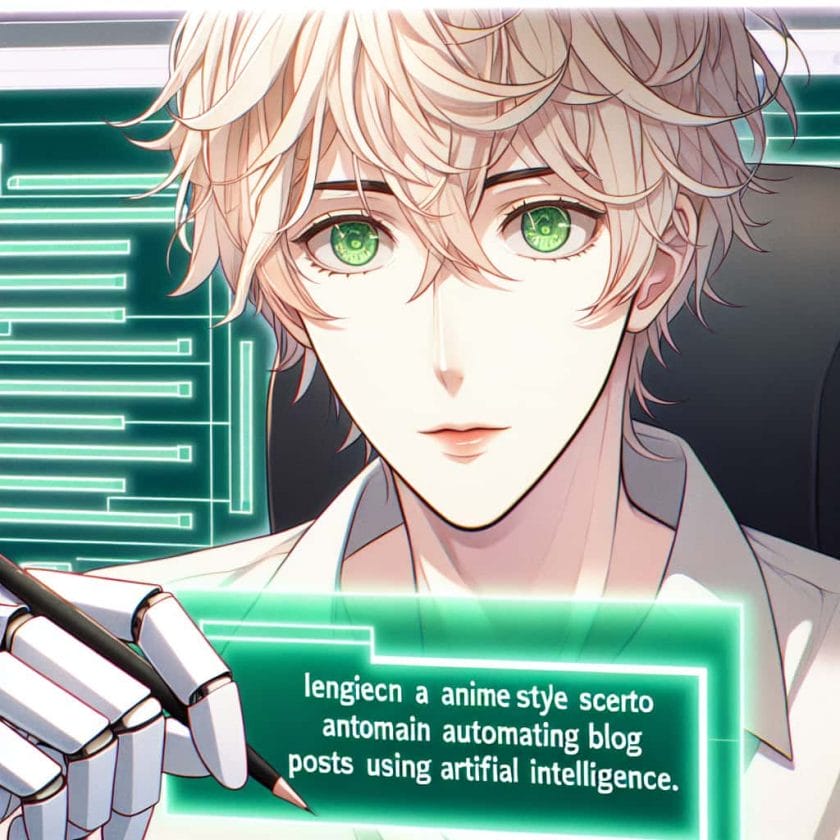Web3 is the next evolution of the internet, promising to revolutionize the way we interact with technology and each other. It’s a decentralized web that uses blockchain technology to create a more secure, transparent, and democratic online experience. In this new era of the internet, users will have greater control over their data and digital identity while enjoying faster speeds and more seamless connectivity. But what exactly is Web3? Let’s dive in.
What is web3?
Web3, also known as the decentralized web, is the next version of the internet that aims to be more open, transparent, and secure. It is a network of decentralized applications (dApps) built on top of blockchain technology that allows users to interact with each other directly without intermediaries.
The concept of web3 is based on the idea of decentralization, where power and control are distributed among all participants in the network instead of being concentrated in the hands of a few corporations or entities. This means that users have greater control over their data and can participate in decision-making processes within the network.
The Evolution of Web
The internet has come a long way since its inception in the 1990s. The first version, known as Web 1.0, was static and read-only. Websites were created using HTML and provided information but did not allow for user interaction.
The second version, Web 2.0, emerged in the early 2000s and introduced dynamic websites that allowed for user-generated content and social networking. Companies like Google, Facebook, and Amazon dominated this era by providing services that focused on collecting user data to improve their products and services.
Web3 represents a shift away from centralized control towards decentralization. It enables users to own their data while still being able to interact with others online without intermediaries.
How web3 differs from previous versions of the web
Web3 differs from previous versions of the web in several ways:
Decentralized Infrastructure
- Web3 uses decentralized infrastructure powered by blockchain technology instead of relying on centralized servers controlled by corporations or governments.
- This makes it more secure against hacks and data breaches, as there is no single point of failure.
Self-Sovereign Identity
- Web3 enables self-sovereign identity, where users own their data and control who has access to it.
- This is in contrast to Web 2.0, where companies collect user data and use it for their own purposes without giving users much control over how their data is used.
Interoperability
- Web3 allows for interoperability between different dApps built on different blockchain platforms.
- This means that users can seamlessly transfer assets and data between different applications without having to go through intermediaries or exchanges.
Key features of web3 technology
The key features of web3 technology include:
Decentralization
Web3 is decentralized, meaning that it does not rely on centralized servers or intermediaries to function. Instead, it uses a network of nodes that work together to validate transactions and maintain the integrity of the network.
Cryptography
Cryptography is an essential component of web3 technology. It ensures that transactions are secure and private by using mathematical algorithms to encrypt and decrypt messages sent between nodes on the network.
Smart Contracts
Smart contracts are self-executing contracts that automatically enforce the terms of an agreement when certain conditions are met. They are an integral part of many dApps built on web3 technology and enable trustless interactions between parties without the need for intermediaries or third parties.
The role of blockchain technology in web3
The role of blockchain technology in web3 is central. Blockchain technology provides the infrastructure for decentralized networks that power web3 applications. It ensures that data is secure and immutable, transactions are transparent and verifiable, and trust is established without the need for intermediaries.
Blockchain technology enables web3 applications to operate in a trustless environment where users can interact with each other directly without relying on intermediaries or third parties. This makes it possible to create decentralized marketplaces, social networks, and financial systems that are more democratic and transparent than their centralized counterparts.
Examples of current web3 applications in use
There are several examples of web3 applications currently in use:
Ethereum
- Ethereum is a blockchain platform that enables developers to build decentralized applications (dApps) using smart contracts.
- It is one of the most popular platforms for building dApps and has been used to create a wide range of applications, including decentralized exchanges (DEXs), prediction markets, and gaming platforms.
Brave Browser
- The Brave browser is a privacy-focused browser that rewards users with cryptocurrency for viewing ads.
- It uses blockchain technology to ensure that user data remains private while still allowing advertisers to target specific audiences based on their browsing habits.
Golem Network
- The Golem Network is a decentralized computing network that allows users to rent out their computer processing power to others in exchange for cryptocurrency.
- It enables developers to run complex computations at a fraction of the cost of traditional cloud computing services like Amazon Web Services (AWS).
Impact of web3 on traditional industries like finance and real estate
Web3 has the potential to disrupt traditional industries like finance and real estate by enabling more democratic and transparent systems that are less reliant on intermediaries.
Finance
- Web3 enables decentralized finance (DeFi) applications that allow users to access financial services without relying on banks or other intermediaries.
- This includes applications like decentralized exchanges, lending platforms, and stablecoins.
Real Estate
- Web3 enables the creation of decentralized marketplaces for buying and selling real estate without the need for intermediaries like real estate agents or title companies.
- This could potentially reduce transaction costs and make it easier for people to invest in real estate.
Potential benefits of using web3 technology for businesses and individuals
The potential benefits of using web3 technology for businesses and individuals include:
Greater Control over Data
Web3 enables self-sovereign identity, which means that users own their data and control who has access to it. This gives users greater control over their privacy and security online.
Cutting Out Intermediaries
Web3 enables direct interactions between users without the need for intermediaries or third parties. This can potentially reduce transaction costs, increase efficiency, and create more democratic systems.
New Business Models
Web3 enables new business models that were not possible before. This includes decentralized marketplaces, social networks, gaming platforms, and more.
The impact of decentralized autonomous organizations (DAOs) on the growth of web3
Decentralized autonomous organizations (DAOs) are organizations that operate autonomously without the need for a central authority. They are an integral part of web3 technology and have the potential to revolutionize the way organizations are run.
DAOs enable decentralized decision-making, where members can vote on proposals and make decisions collectively. This creates more democratic systems where all members have a say in how the organization is run.
DAOs are already being used in several industries, including finance, gaming, and social networks. They have the potential to create more transparent and equitable systems that are less reliant on intermediaries.
Challenges facing the adoption of web3 technology
There are several challenges facing the adoption of web3 technology:
User Adoption
Web3 technology is still relatively new, and many users may not be familiar with it or understand its benefits. This could potentially slow down adoption as users may be hesitant to switch from traditional systems.
Scalability
Web3 technology is still in its early stages, and scalability remains a challenge. Blockchain networks can currently only handle a limited number of transactions per second, which could potentially limit their use in high-volume applications like social networks or gaming platforms.
Regulatory Uncertainty
The regulatory landscape surrounding web3 technology is still uncertain. Governments around the world are still trying to figure out how to regulate cryptocurrencies and blockchain-based applications, which could potentially slow down adoption or create legal challenges for businesses operating in this space.
How developers can get involved in building on top of web3 infrastructure
Developers can get involved in building on top of web3 infrastructure by:
Learning Blockchain Development
- To build on top of web3 infrastructure, developers need to learn blockchain development.
- This includes learning programming languages like Solidity, which is used to write smart contracts on the Ethereum platform.
Contributing to Open-Source Projects
- There are several open-source projects related to web3 technology that developers can contribute to.
- This includes projects like Ethereum, IPFS, and Golem Network.
Building dApps
- Developers can also build decentralized applications (dApps) on top of web3 infrastructure.
- This requires a deep understanding of blockchain technology and smart contract development.
The role of cryptocurrencies in the development of web3 ecosystems
Cryptocurrencies play a crucial role in the development of web3 ecosystems. They enable transactions within decentralized networks, incentivize users to participate in these networks, and provide a means of exchange for goods and services within these networks.
Cryptocurrencies also enable new business models that were not possible before. This includes microtransactions, where users can pay small amounts of cryptocurrency for access to content or services, and tokenization, where assets like real estate or art can be represented as tokens on blockchain platforms.
Accessibility and interaction with web3 applications for traditional internet users
Accessibility and interaction with web3 applications for traditional internet users remains a challenge. Many users may not be familiar with cryptocurrencies or how they work, which could potentially limit adoption.
However, there are several efforts underway to make web3 technology more accessible to traditional internet users. This includes user-friendly wallets that make it easy for users to store and manage their cryptocurrency holdings, as well as educational resources that help users understand the benefits of web3 technology.
Comparison between Web 2.0 and Web 3.0
The main differences between Web 2.0 and Web 3.0 are:
Centralization vs Decentralization
- Web 2.0 is centralized, meaning that power and control are concentrated in the hands of a few corporations or entities.
- Web 3.0 is decentralized, meaning that power and control are distributed among all participants in the network.
User Data Ownership
- In Web 2.0, companies collect user data and use it for their own purposes without giving users much control over how their data is used.
- In Web 3.0, users own their data and control who has access to it.
New Business Models
- Web 2.0 enables new business models like social networks, e-commerce platforms, and search engines.
- Web 3.0 enables new business models like decentralized marketplaces, gaming platforms, and social networks that are more democratic and transparent than their centralized counterparts.
Ethical concerns regarding the implementation and use of Web 3 technologies
There are several ethical concerns regarding the implementation and use of web3 technologies:
Cryptocurrency Volatility
The volatility of cryptocurrencies could potentially lead to financial instability for individuals or businesses using them as a means of exchange or store of value.
Data Privacy Concerns
The use of blockchain technology does not necessarily guarantee data privacy for users. While users may own their data, it is still visible on the blockchain and could potentially be accessed by unauthorized parties.
Energy Consumption
The energy consumption required to maintain blockchain networks is significant and could potentially have negative environmental impacts.
The impact of Web 3 on our online experiences
Web 3 has the potential to revolutionize our online experiences by creating more democratic, transparent, and secure systems. It enables users to interact with each other directly without intermediaries, own their data, and participate in decision-making processes within networks.
Web 3 also enables new business models that were not possible before, including decentralized marketplaces, gaming platforms, and social networks. These platforms are more democratic and transparent than their centralized counterparts, giving users greater control over their online experiences.
In conclusion, Web3 is a new era of the internet that promises to bring decentralization and more control to users. It’s an exciting time for technology, and we’re thrilled to be at the forefront of this revolution. If you’re interested in learning more about Web3 or exploring our AI services, feel free to get in touch with us today. We’d love to hear from you!

What is Web3 used for?
Web3 provides more autonomy regarding personal data and decentralized storage. Its decentralized design enables users, rather than large technology corporations, to have greater control over the internet, resulting in numerous benefits.
What is Web3 in simple terms?
Web 3.0, alternatively called Web 3, refers to the future iteration of the internet, in which the majority of users will be connected through a decentralized network and have control over their own data. This article has provided insight into the anticipated advancements and changes in technology within the coming years.

What is Web 3.0 and its examples?
Web3, also known as Web 3.0, represents a new era of the internet with a set of values and technical applications. This includes features such as decentralization, artificial intelligence, blockchain, connectivity, and ubiquity. These are prime examples of the defining characteristics of Web3.
What is Web3 in real life example?
Utilizing web3 technology, AI-based chatbots can provide customized customer experiences by accessing confidential information across multiple devices and applications through interoperability. This is just one example of the potential applications of Web 3.0 in chatbot technology.
How will Web3 make money?
One way for regular individuals to profit from Web3 technology is by investing in and trading cryptocurrencies, which are digital assets built on the decentralized blockchain system.
How will Web3 change the world?
Web3 technologies can provide individuals with a higher degree of authority over their possessions and information, as well as the ability to engage in decentralized networks and platforms. This can result in increased economic and societal self-reliance.








